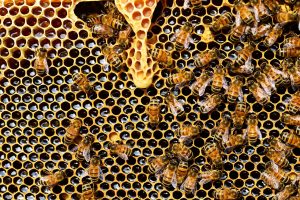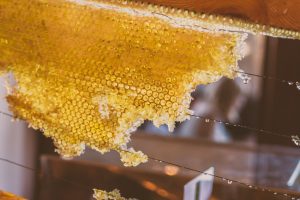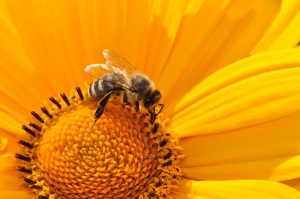
All forms of life are equally important, and we are not here to argue about that. Every act of Mother Nature has its proper place in the big puzzle of life.
That said, bees are some of the most fascinating living creatures out there. There is tons of literature and research on their unique behavior that demonstrate the crucial role they play as interconnectors in preserving the ecological balance.
This article intends to discuss at length the importance of bees and their role in pollination in the Philippines. Unfortunately, bees have been facing different threats globally, and this archipelagic country is no exception. However, you will find out that the locals have devised clever ways to preserve bees and maintain pollination. Read below and learn more about bees in the Philippines, and how the country encourages beekeeping to evolve the ecosystem.
Why Are Bees Important?
You must have already heard a thousand times that bees are important. But why is that? Let us explain briefly before we elaborate more on the rest of the topic.
In a nutshell, bees have a vital role in preserving and promoting ecological balance. There is hardly any environment that does not require the presence of bees to function properly. Agricultural lands, tropical habitats, and mangrove forests are only a few examples.
So, what makes bees so important? The answer is simple: Bees are the driving factor of pollination. More than 80 % of flowering crops worldwide are pollinated by these amazing insects. In other words, without bees, you would be unable to enjoy many of your favorite foods like fruits, vegetables, berries, and nuts.
While stimulating reproduction in plants, bees get food in the form of nectar. This process is nothing less than nature’s reciprocity in action.
How Does Pollination Work?
Without pollinators like bees and other insects and animals, biodiversity would suffer tremendously. Ecosystems would become less resilient. Research shows that one-third of flowering plant species will stop producing seeds altogether. Also, one-half will suffer major fertility reduction. A survey reported that 87 out of 115 primary food crops need a certain level of pollination to exist and sustain their yields. Lastly but equally important, pollinators such as bees contribute to a higher quality of fruits and seeds.
If you want to know more about how pollination works, check out this quick video below:
Bees and Pollination in the Philippines: Challenges and Solutions
The Philippines is no exception when it comes to the alarming global trends regarding bees and pollination. The archipelago is very diverse, so it is no wonder that it is the home of several unique bee species as well as many forms of food plants. Let us dive straight into the context.
Bees in the Philippines

According to scientists, there are nine species of honeybees in the world. Of these, five are native to the multifaced country of the Philippines. On top of that, more than seven species of stingless bees are also found on the archipelago. Several of them have been domesticated for agricultural purposes.
One of the most important species of honeybee in the Philippines is the laywan, or in Latin, Apis cerana. These remarkable creatures build nests shaped as vertical combs. One such comb can host up to 7,000 bees and is also used to store honey. During the hot summer days, the worker bees from the colony flock outside the hive and use their wings as fans to cool down the nest. Isn’t it fascinating!
Being highly intelligent insects, the laywan build their nests where pollen and nectar are abundant. The reason is that – unlike other honeybee species – they do not store large amounts of honey. This makes them more prone to starvation and death in cases of prolonged lack of resources.
As we mentioned, stingless bee species are also widespread in the Philippines. The prevalent one is the kiwot, or Tetragonula biroi. While in morphology the kiwot closely resembles honeybees, it has the size of an ant and lacks a sting.
Kiwots are very important in the archipelago because they are vital in the pollination of nine domestic crop foods. These include coconut, macadamia, mango, and more. In addition, kiwots also contribute to the pollination of over 60 other flowering plants.
To go even further, kiwots are essential to the pollination of pili nuts. The pili is a local species of tree known for the tough shells of its nuts. Pili nuts are used for many purposes, such as reducing cholesterol levels, improving bone health, and promoting heart health. They are also rich in vitamin A and bring energy.
Last but not least, kiwot honey is known to have antibacterial properties twice as strong as honey coming from other bee species. That said, kiwots produce less honey than other bees because they are smaller. Nonetheless, their hives are more resilient to pests. The reason is that they contain propolis, which acts as a barrier against pests penetrating the nest. Propolis also has anti-fungal and anti-bacterial properties, which protect the nests and ensure longevity.
Besides laywan and kiwots, other bee species in the Philippines include:
- Apis Mellifera
- Osmia rufa
- Xylocopa virginica
- Bombus sp.
- Vespula
Threats Facing Bees in the Phillipines
In an increasingly globalized world, the Philippines has been no stranger to the appalling phenomenon of bees dying out at tremendous rates due to human-inflicted factors. Climate change is one such issue. Greenhouse emissions cause higher temperatures. The latter, in turn, changes the timing of plant growth. Thus, when the time comes for bees to pollinate, there is very little nectar left, causing severe challenges in survival and reproduction.
The overuse of pesticides is another big problem. It poisons bees either immediately via direct contact or gradually over time when consuming contaminated substances often.
There is still little data to describe the acuteness of the problem with dying bee populations in the Philippines. However, one thing is for sure: Bees on the archipelago are just as endangered as those in other parts of the world. In some aspects, this is even more true given the local trend towards urbanization, which is destroying the natural habitat of bees. In addition, wild colonies of honeybees in the Philippines have suffered a lot at the hands of malicious harvesters.
Local Solutions: The Positive Example

However grave the situation might look, not all hope is lost in the Philippines. Thankfully, there are entrepreneurial and preservation endeavors to combat bee extinction and promote population sustainability.
The Balay Buhay sa Uma Bee (BBu) Farm
The Bicol region southwest of Manila is the home to the Balay Buhay sa Uma Bee (BBu) farm owned by Luz-Gamba Catindig. What is unique about this farm is its concept of preserving bees while empowering women.
Catindig, who is a lover of trees and vegetation, has adopted a model of pollinator-friendly agroforestry combined with serious improvements to the common beehive. The latter have been developed and implemented through a collaboration with local university researchers.
As a result, the farm has seen a 50 % increase in coconut yields. Catindig also grows the pili tree and a berry tree called the hagis. In addition, the farm empowers local women by employing them, thus allowing them to escape the consequences of poverty and natural disasters. The latter is particularly important, as the region often suffers from devastating typhoons.
The Operation Pollinator by Syngenta
The Philippines is the home of another project that concentrates on preserving bees and encouraging pollination. It is known under the name of Operation Pollinator and is authored by an organization called Syngenta Philippines.
The project began in 2017 aiming to create bee habitats in non-productive lands surrounding crop fields. Its goals include boosting pollinator numbers, promoting health, and increasing variety.
The Philippines is not the only destination for Syngenta’s project. A total of 41 countries have been included in it and have witnessed the positive effects of boosting pollination on crop yields.
Conclusion

Creating sustainable habitats for bees is of primary importance in the Philippines and elsewhere in the world. After all, pollination is vital to enhancing biodiversity, promoting sustainable farming, securing environmental protection, and increasing crop yields.
The Philippines might be facing both global and domestic challenges in protecting bees and advancing pollination. However, individuals and organizations have begun to recognize the importance of taking specific measures to tackle these problems.
It is positive to see more researchers getting engaged and working with businesses and people at large to preserve bees and improve their habitats. Of course, this is not an easy task, especially in a country where the economy has been lagging and awareness is still low. However, the basis has been created, and it appears that the Philippines are on the right way to preserving bees and sustaining pollination.

